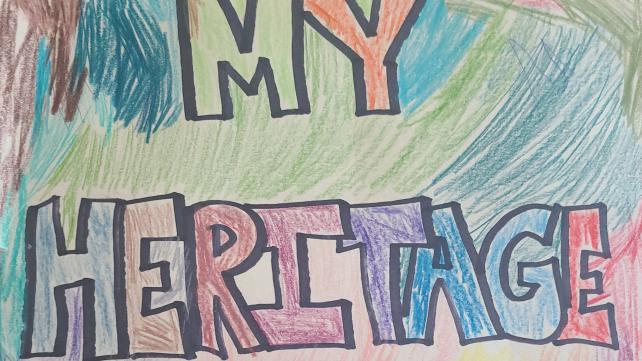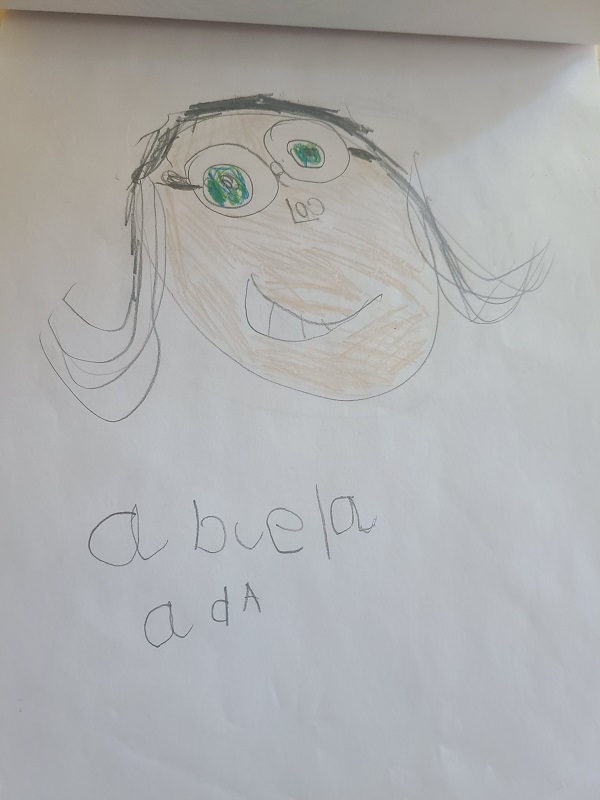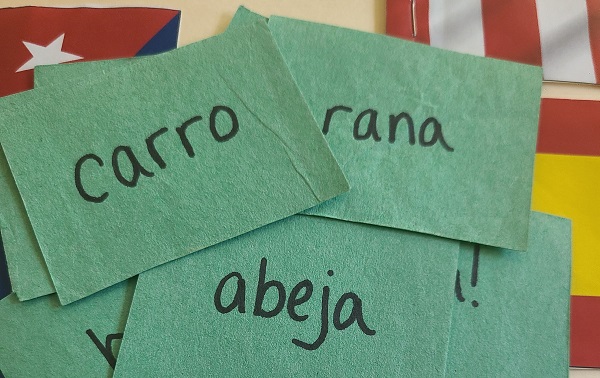
When my first-born child was about 6 years old, he started asking a lot of questions about our family.
He wanted to know how we were connected, why we spoke different languages, and how and why we all came from different places. I realized then that a big part of encouraging my children to build strong ties with our family would be sharing our family histories.
But for young children, especially those who grow up away from extended family members, keeping knowledge about the family straight can be a struggle. This is when we decided to make a Family Heritage Book.
The Family Heritage Book
Family heritage projects are a wonderful way to start young children thinking about concepts of history and geography while also building their own sense of connection and identity within the family structure.
A Family Heritage Book is a simple, homemade book that houses a collection of items relating to your family’s members, history, culture, values, languages, and customs. The project can take on whatever final format you decide to give it, including:
- A lap book (this was how we made ours and is a great option for young children)
- A scrapbook
- A journal
- A comic book
- A picture book
- A chapter book
- Even a cookbook!
If you plan to make your heritage project with older children, consider leveling up the format to something digital such as a Google Slide Deck, a private blog or webpage, or even a homemade documentary film.

Ideas for What to Include
Once you and your children decide what kind of book you want to make, the next step is deciding what will go inside of it. Again, there are a lot of options here, such as:
- Hand-Drawn Pictures (the photo above is of his Abuela (Grandmother) Ada)
- Photographs
- Maps
- Flags and Crests
- Family Interviews
- Family Stories
- Letters
- Keepsakes
- Paper Money from Different Countries
- A Family Tree
- Favorite Family Recipes
- DNA Tests and Results
- Journal Entries
- Newspaper Clippings
Something we included in our heritage book as well were two simple, homemade games so the book became a tool for learning and connection as well as fun!

Gathering Contents and Exploring the Family
Once you know which items you want to include, it's time to start gathering everything together. This will be, by far, the longest part of the process but it’s also wonderfully rewarding.
It took my son and I about one month to complete his Heritage Lap Book but all of that time was filled with lots of stories, memories, and extra one-on-one time with family members as he worked to gather his information and complete his book. It was time well-spent, Alhamdulilah, so there’s no need to try and rush the process.
The aim of the project is not really to have an end-product, but to make room for your children to explore their family history and strengthen the ties with family in the process. Building the book is icing on the cake.
Allow your child to be an investigator and ask lots of questions. Arrange playdates, sleepovers or lunch dates for your son or daughter to sit down with family members and interview them, draw pictures of them, and collect their stories.
Make time to go to the library and pick up books (fiction and nonfiction) about the places your family is from, the languages they speak, and the traditional cultures your family shares. Then bring all those books home and read them aloud together as a family.
Schedule time where your child is welcomed to help recreate family favorite meals, play family favorite games, or even learn a special skill that someone in the family can pass down. Print out or draw images of maps or family crests. As you gather each piece or section for your heritage book, keep it in a safe place until you and your child are ready to assemble everything into a final product.
Assembling Your Heritage Book
Once you have all of your contents gathered, you can begin putting your final book together. Talk with your child to collaboratively decide the order of contents (you’ll want a good amount of table or floor space for this part). Does she want the family tree to go first? Or would he like the book to begin with the pictures he drew? How about starting off with grandpa’s famous spaghetti recipe?
Let your child decide how they think the book works best and help them to write, staple, glue, and tack everything into place.
If you’re making a lapbook like we did, the amount of pages you can have is endless but you will want to be careful with where the pages land when they are folded and remember that you will need to use both the front and back of some pages to avoid gaps.
If you’re making a scrapbook, your child can also go to a craft store and pick up some colorful or patterned background papers to add more pizazz to their books. Stores like AC Moore and Michaels also sell other scrapbooking items such as sticky photo corners to insert photographs, silly stickers, and scissors that cut decorative patterns.

When You’re Finished
Once your Family Heritage Book is complete, it’s time to sit back and enjoy it.
Read it out loud to the family. Play the games inside of it. Create a proper home and space for it, such as being displayed on a shelf or coffee table, where it can have a valued presence in the home and stay easily accessible for your children to come back to again and again.
InshaAllah, your heritage book can become a first step for your child to better understand and connect with the family, as well as with themselves, and prove to be an effort that helps bring you all closer together for His sake.
Melissa Barreto is a home educating mother of five children and the Co-Founder of Wildflower Homeschool Collective, a homeschool organization based in Northern New Jersey, USA.



Add new comment